Updated: May 2025
Let’s be real—Iceland is not cheap. Alongside places like the Maldives, the United States, and the UAE, it ranks as one of the most expensive destinations I’ve ever visited. And yet… I keep going back.
I’ve travelled to Iceland in both winter and summer, and each time I’ve managed to stick (mostly) to a reasonable travel budget. So the question is: how can you explore Iceland without breaking the bank?
Here are my top tips to travel Iceland on a budget—based on real experiences, practical hacks, and prices in Canadian dollars.
READ MORE: Here is my total budget breakdown for travelling to Iceland in the winter of 2016.
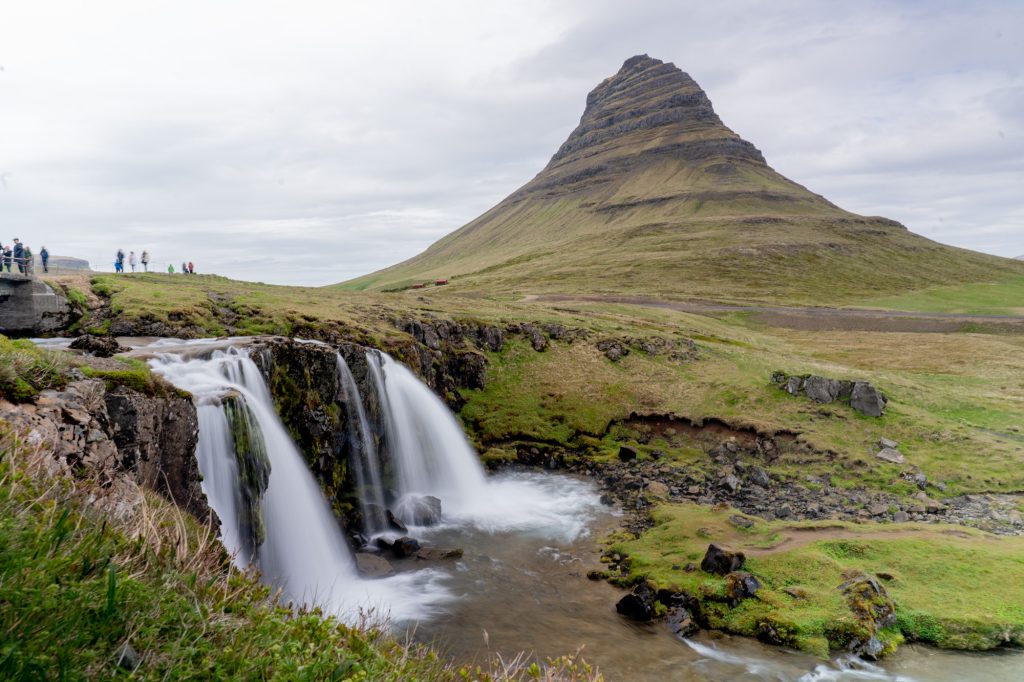
Travel Iceland on a Budget
Want to travel to Iceland on a budget?
Here are 10 practical tips to help you save money on food, travel, and accommodation.
1. Shop at Iceland’s Grocery Stores to Save on Food
Eating out in Iceland can get very expensive. A single meal for two—without alcohol—can easily hit $100 or more.
Instead, shop at Icelandic grocery stores like Bonus, Krónan, or Nettó. We managed to eat for three days on $40 in groceries for two people. Think simple and healthy meals: oatmeal, cereal, wraps, sandwiches, canned meats, cheese, and fruit.
Pro tip: Book accommodation with a kitchen to cook dinner and prep lunches. And look for hotels that include free breakfast—European-style breakfasts are hearty, with lots of bread, cheese, meat, and Icelandic specialties.
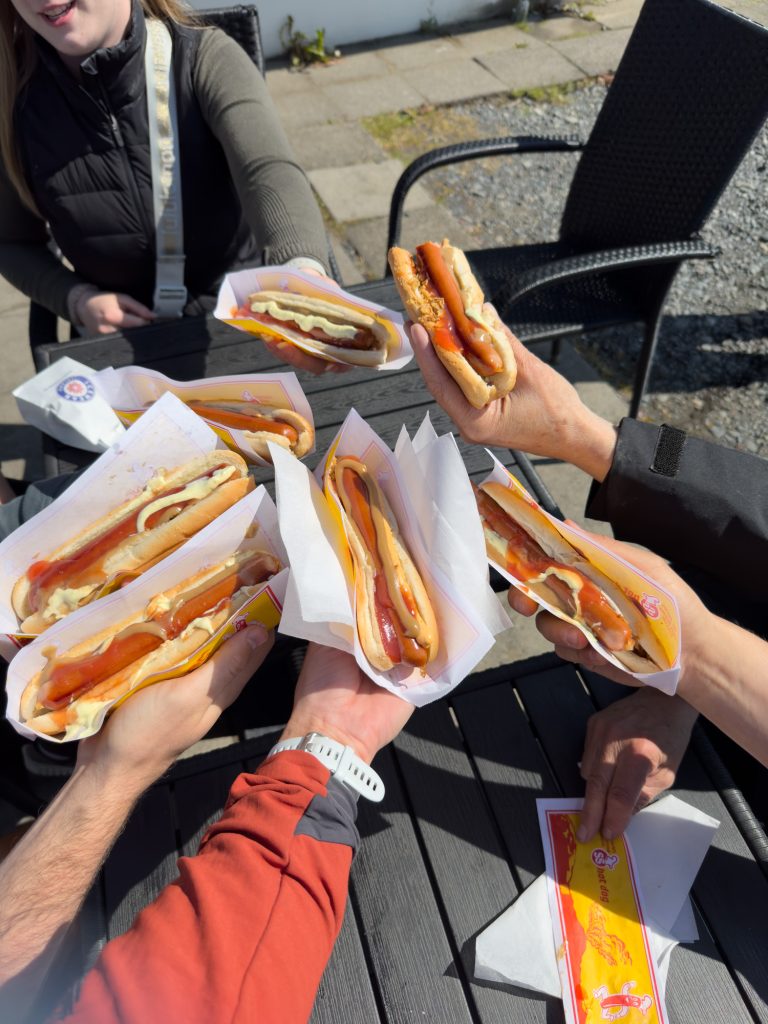
BUDGET TIP: Grab an iconic Icelandic hot dog (Pylsur) at a gas station—one of the cheapest hot meals in the country, usually $5–10.
READ MORE: Unusual Icelandic Cuisine: The Best and the Worst
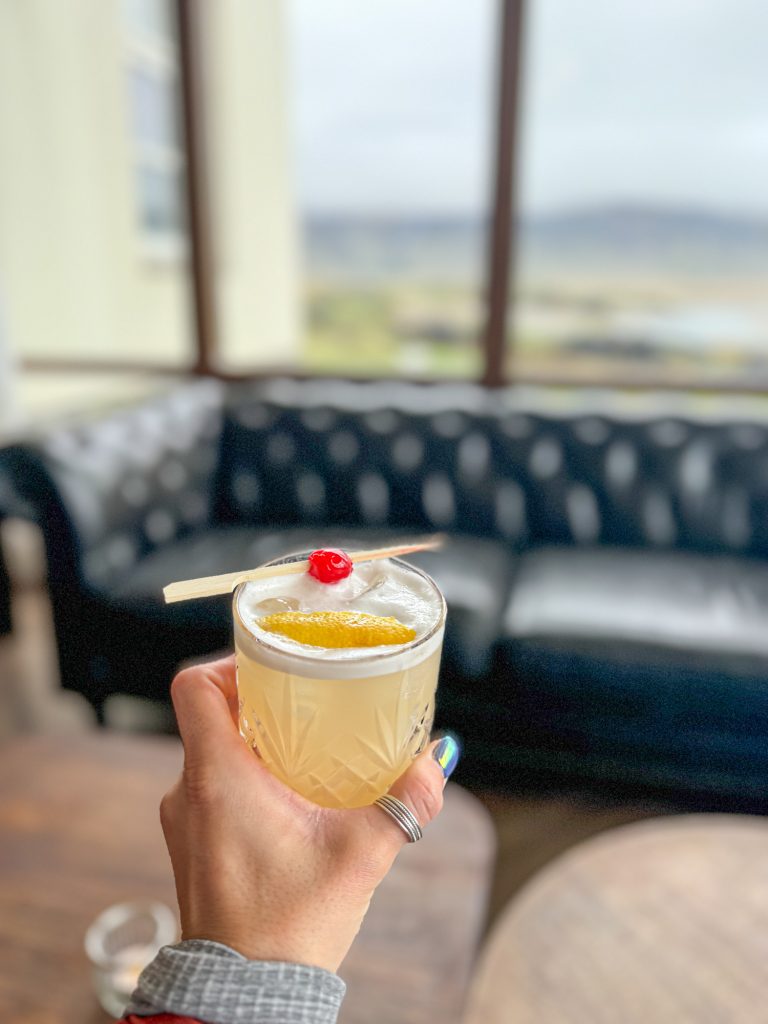
2. Skip the Booze (or Buy It at the Airport)
Alcohol in Iceland is heavily taxed and only sold in government-run Vínbúð stores or directly from breweries.
Your best bet? Buy alcohol at the Keflavík Airport on arrival, where prices can be up to 30% cheaper than in town. If you enjoy a drink in the evening, stock up before heading out on your trip.

3. Travel to Iceland in the Off-Season (Winter)
While summer is beautiful, Iceland in winter is absolutely magical—and cheaper.
Accommodation, tours, and car rentals can be up to 40% less expensive in the winter months. You’ll also get fewer crowds, better deals, and a chance to see the northern lights. (And yes, the golden hour light is as dreamy as you’ve seen on Instagram.)
READ MORE: 20 Photos to Inspire you to Visit Iceland in Winter
While you won’t be able to camp, accommodation is often cheaper than during the extremely busy summer months. Car rentals can also be as much as 40% cheaper in the colder months. You might even be able to bargain with a company if you’re booking a variety of tours or several nights with them.
4. Rent a Car – or Better Yet, a Campervan in Iceland
Driving in Iceland gives you freedom and can be more affordable than booking day tours. If you’re travelling with a friend or partner, it’s cost-effective, especially if you split fuel costs.
Want to save even more? Rent a campervan! It combines your transport and accommodation in one. I love Cozy Campers, which often offers discounts up to 30%. Plus, they’ve shared a 5% discount code for my readers:
Use code THELOSTGIRLSGUIDE when booking with Cozy Campers.
Note: For certain adventures (like crossing Iceland’s F-Roads), you’ll need a 4×4 or a guided tour due to road conditions.
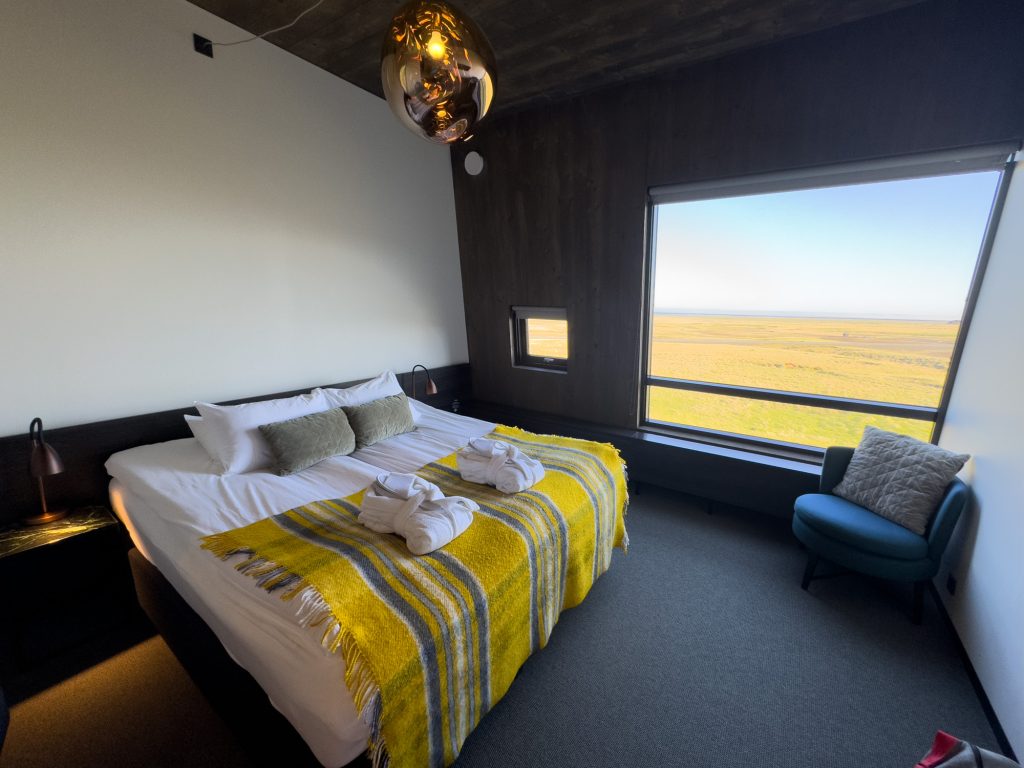
5. Sleep Cheap: Hostels, Airbnb & Couchsurfing
I was shocked at the price tag of accommodation in Iceland. Standard hotel rooms in Iceland often start around $200 – $400 per night – oof!
Instead, consider:
- Hostels – private rooms with shared baths are cheaper than hotels.
- Dorm rooms – shared rooms start around $60–$90 / night per person.
- Airbnb – great for groups or longer stays.
- Couchsurfing – free if you’re comfortable staying with locals.
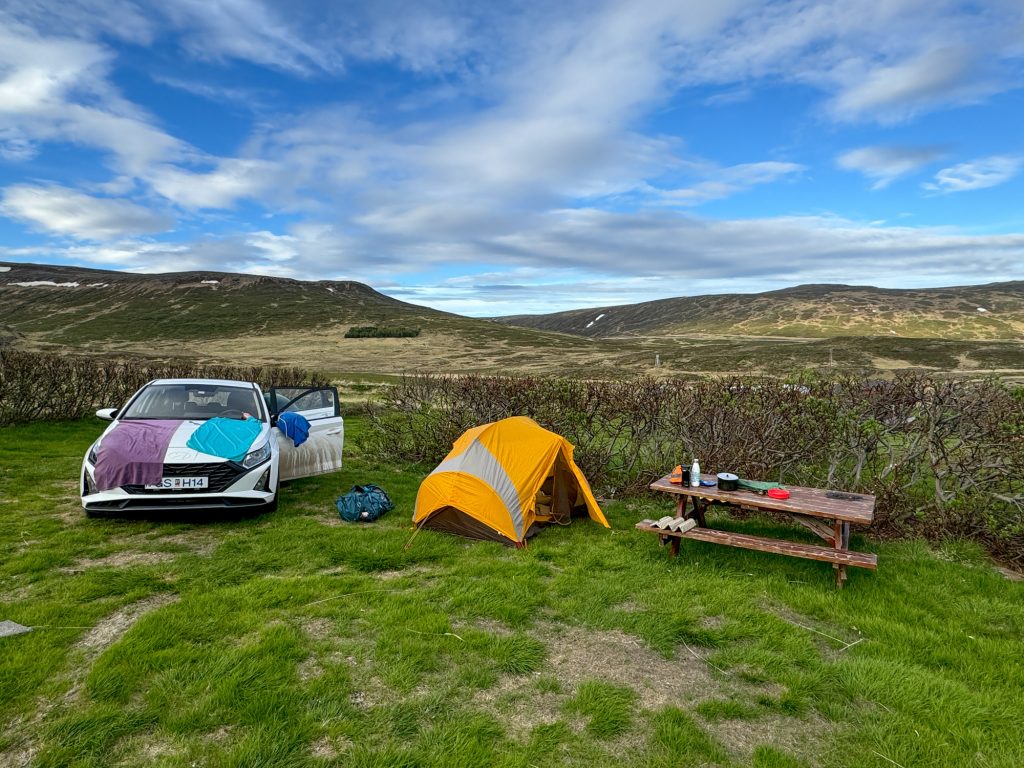
6. Camp in Iceland (in Summer)
Camping is hands-down the cheapest way to stay in Iceland during the summer months. My partner and I flew over with a tent, sleeping bags, and our camping stove – and it made for some pretty special memories. (Granted, we were also hiking the Laugavegur Trek, so a tent was necessary).
Most campsites are around $50/night, and many have showers and toilets. Plus, you’ll be surrounded by Iceland’s stunning natural landscapes.
Favourite campsite: Near Sælingsdalur in West Iceland, with access to Guðrúnarlaug Hot Spring—a perfect way to start or end your day.
7. Use Coupons and Promo Codes for Iceland Travel
I once saved $300 on a 12-day car rental in Iceland just by using a promo code. Check out the Icelandic Coupons app, which offers deals on everything from restaurants to activities. Prices are often 15 – 30% off, and many 2-for-1 entries on some attractions.
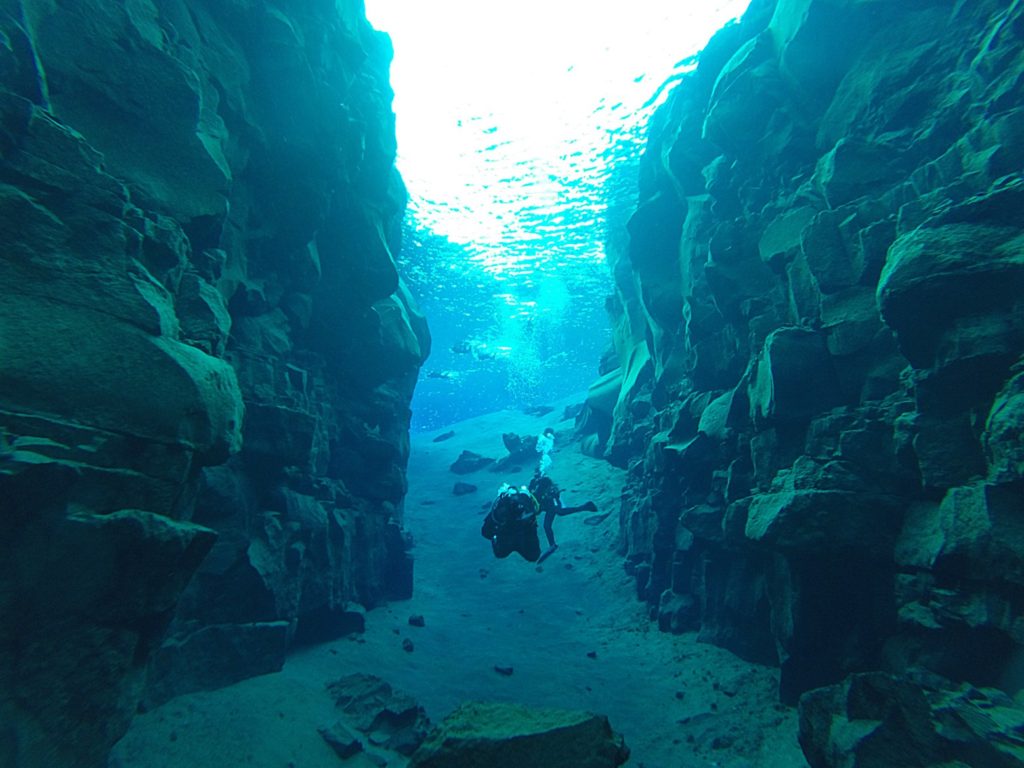
8. Prioritize Your Iceland Excursions
You can’t do everything in Iceland – it’s just too expensive. So make a list of must-do experiences and prioritize what’s unique to the country.
For me, diving the Silfra Fissure was a must. But whale watching? I knew I’d get another chance in Patagonia or Canada.
Also, consider skipping the Blue Lagoon, which now costs €102 per person. While it’s a cool experience, there are many other geothermal baths across the country – some for a fraction of the price, and some (like Guðrúnarlaug) are even free.


Is the Blue Lagoon a neat experience? Yes. And if it’s on your bucket list, by all means, cross if off (I did!). But if budget matters, you can visit so many other great geothermal bath sites for much less.
9. Look for Flight Deals and Alternative Airports
We saved $700 by flying out of Edmonton instead of our home city of Saskatoon, even after factoring in gas and parking. I also saved $140 by choosing the right booking window and flexible dates.
Book early, stay flexible, and compare nearby airports to maximize your savings.
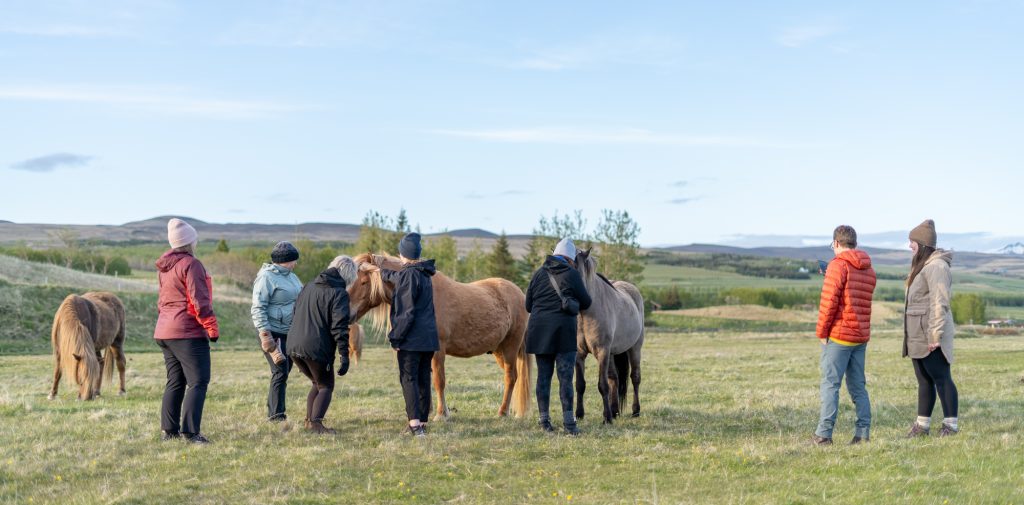
10. Take a Shorter Trip
Yes, a full month in Iceland would be amazing. But I chose to travel for 18 days instead. A shorter trip meant I could spend more each day without stressing over my total budget.
Travelling should be fun, not financially stressful. Don’t overextend your stay if it means worrying about money the whole time.



Bonus: Don’t Let Budgeting Ruin the Experience
While I love saving money, I’ve learned not to let budget restrictions ruin the trip. If there’s something you really want to do – do it. Travel is about joy, wonder, and the experiences, not pinching pennies until the fun is gone.
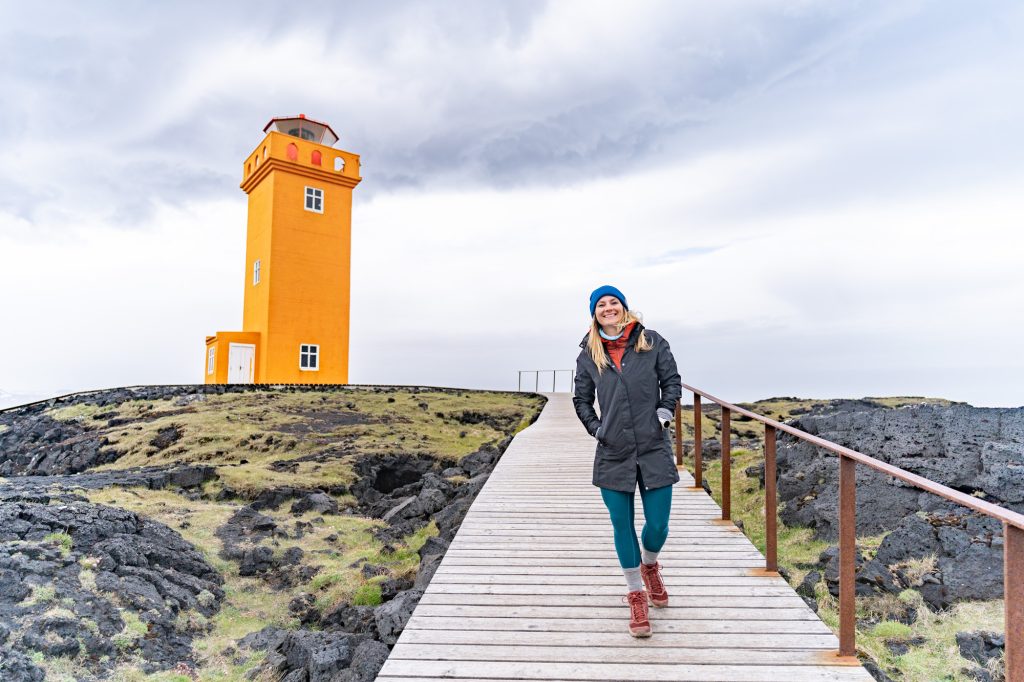
Travelling Iceland on a Budget Is Possible
Yes, Iceland is pricey. But with a bit of planning, a flexible mindset, and these tips, you can experience this incredible country without blowing your budget.
Even adopting one or two of these tips can lead to hundreds of dollars in savings.
What are your favourite budget travel hacks for Iceland—or anywhere in the world? Let me know in the comments!
Want to save this post to travel Iceland on a budget for later? Pin it, share it, or bookmark this guide for your next trip to Iceland!





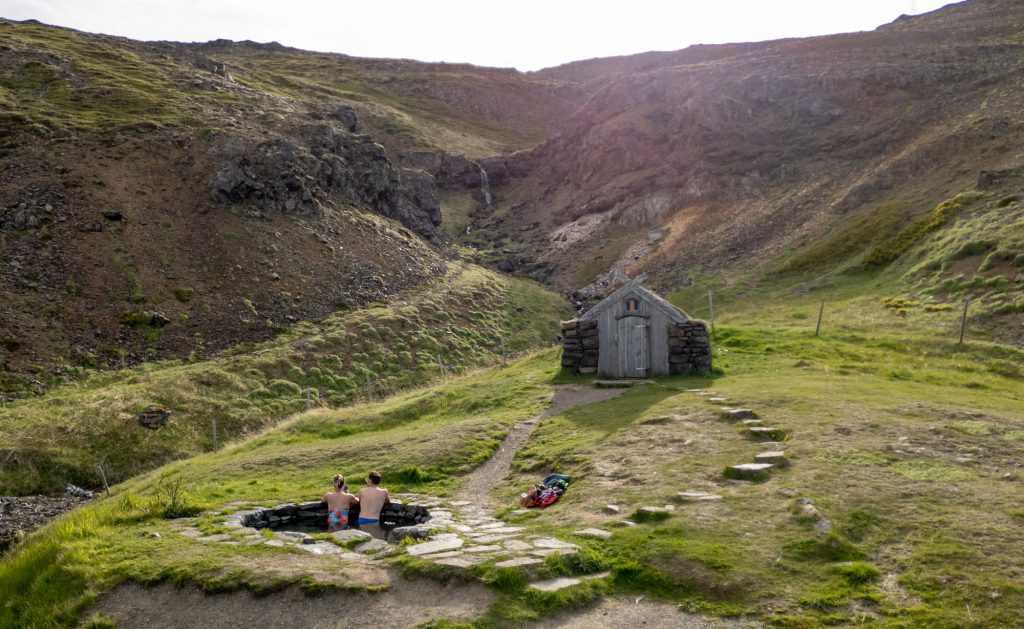

Great blog! I really want to go to Iceland but always assumed it wasn’t possible ‘on a budget’
Thanks Kate! You definitely have to get a little creative with budgeting and think outside of summer season. It’s still expensive but much more manageable than what most people think. Hope you can make it there soon as it really is incredible! 🙂
I’m not sure if I will be able to travel Iceland, but your travel guides are very inviting. Can you recommend a good city to stay there?
Reykjavik is a great place to base yourself out of! It’s easy to get tours to the southeast or even the north to the Snaefelssnes peninsula out of the city. A second option would be to fly to Akureryi and stay up there but Reykjavik is much more popular! 🙂
I’m planning to visit from December 14-18th from Edmonton as well! Did you drive while you were in Iceland? How did you go through about booking the car? Im planning to do a solo trip so I’m a bit anxious about driving alone. Are there any sights in particular that you would recommend?
Thanks!
Planning a trip for January and it has been interesting for sure lol but your advice has been helpful.. my question is what diving outfit did you use my girlfriend and I want to dive silfra I want to use good outfit but also try not to break the bank to much.
Cheers
Both diving companies in Iceland are very reputable. I went with scuba.is personally but I do have to admit, it won’t be cheap. I paid ~$500 CAD for my dive and each company is comparable. It was worth it because diving is my passion and Silfra had been on my bucket list for years but it was hard to drop that much cash on one dry-suit dive for 40 minutes!
I’ve read mixed reviews on the Blue Lagoon, so I was wondering if you have any recommendations for other geothermal spas that may or may not possibly offer a massage or facials for my husband and I? I’m trying to mix in some relaxation time at a reasonable price. P.S. We’re probably going September or October 2016 if that helps.
I’m not sure where all you plan on going, but consider heading north to Akureryi! There’s another hot springs similar to the Blue Lagoon but a little cheaper near Myvatn. Although I’m not sure if they do massages there or not. Also check out hotpot.is for free (and beautiful) outdoor hotpots around the country! They’re great to warm up in in the cooler autumn weather 🙂
I skipped the Blue Lagoon and Myvatn Nature Baths, but I went to some of the public swimming pools. There are several good ones in the Reyjavík area and an amazing one in Akureyri which I highly recommend. It was very relaxing (sauna, multiple hot tubs, waterfall fountains, etc.), very cheap, and was just about the only time I got to hang out with Icelanders.
Thanks for the input Peter! I also really enjoyed every town’s local swimming pool. Especially on the cold winter nights! 🙂
These tips are great! Iceland is my next destination so I’ll start making preparations. Thank you for these tips! Iceland looks incredibly beautiful.
My pleasure Marcos! I’m glad they were helpful! It’s a gorgeous country – one that definitely needs to be seen in both winter and summer!